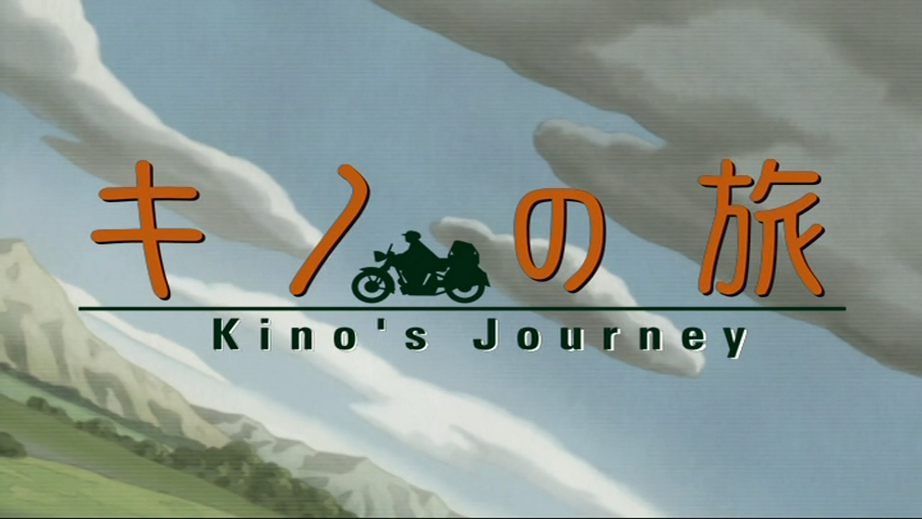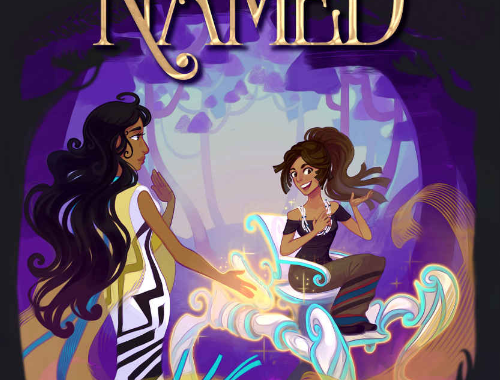
Review : Kino no Tabi
I’m at an age and a disposition where I just don’t have a lot of favorite things anymore. My daughter asks me what my favorite color is, and I have to give a half-hearted reply. “I like all the colors,” I’ll say. Or someone will ask my favorite dish, and I’ll have fond memories of chicken fried steak or coconut shrimp, but I’d hardly call either a favorite. I don’t even have a favorite fruit, although at one time I’d answer “pineapple” because hey, it’s a sweet kind of exotic fruit. I’ve never been one to have a favorite band (especially because tastes change, as do artistic directions).
Kino’s Journey is still my favorite anime.
Note – I’m a member of a Discord server called Leth’s Lazy Lounge, where we all did an “anime exchange” wherein all participants bring a show to the table, we all watch what we can during the week, and then we share our thoughts. Many participants shared one of their favorite shows. A few shared a show they just wanted to discuss, and a couple were apparently chosen just to mess with all participants. I’ll be taking all of these seriously. This is the sixth show of this exchange, and is my submission.
Ever since the day I found the first DVD (which wasn’t even available as a box set yet) for sale for $30 at a Hastings, I have never recommended any other show more often. While I can’t say it’s the Japanese Cartoon that’s impacted my life the most (that dubious honor goes to Welcome to the NHK) no other show has caught my imagination. Dear reader, my hope is that if you haven’t already, you’ll give this franchise a look as well. Most of what I’ll be discussing pertains to the 2003 anime release, although some of this carries over to the 2017 series which plays off of some of the same stories while introducing new ones. I also must admit I’ve never had the opportunity to read the light novels, although there’s been concerns about their localizations so that may have been a bullet dodged.

It’s worth noting that, in the Japanese version of the show, Kino specifically eschews being called a boy or a girl. “Kino is Kino.” There is a very strong argument that this, coupled with their androgynous nature, would make Kino “agender” or “gender-fluid.” The author himself has stated that the original intent was to write a story with a “reveal” or a “trick” that just naturally found itself as part of the character’s personality. The English dubs, by comparison, kind of throw this to the wayside. You’ll see some pretty strong opinions on this one way or the other, depending on if you happen to be talking to members of the transgendered community or if you’re talking to English anime fans who watched the dub and aren’t familiar with the source material. When I watched it for the first time, my takeaway was that I was watching the story of an androgynous woman taking up a (specific) man’s name as to not be harassed during her travels and in honor of him. I’m not going to get into this much further in this review because it’s a deep rabbit hole, but I will be intentionally using they/them pronouns from this point forward in hopes of best respecting the source material.
The original stories were very serial in nature; this anime, by comparison, attempts to string things together with an unusual hook that the first episode is chronologically towards the end of Kino’s most recent travels. There’s a reflection on why Kino travels that states once they were inclined to stay more than three days at a location, and even then… they were unable to.
Why it works: These are basically parables of sorts, with two competent characters doing their best to survive. Kino is kind and compassionate, but also handy with the gun Persauders. That markmenship, yikes. Hermes, by comparison, is analytical and caring but also pessimistically realistic and is not afraid to complain. Together, they try not to get too involved with the places they visit, even as events often push them towards being more than just passing observers.
Each place that Kino travels is captivating. They are clearly fantastical, yet they make sense. There’s a fair bit of action, but the pacing lends itself more to discovering the secrets of each place visited and what makes them tick.
There are 13 episodes of Kino’s Journey, encompassing 12 different stories. Of those, the ones that stand out the most to me would be…

Land of Visible Pain: The next time someone asks you, as part of a memegen or social media quiz, if you would want the ability to read minds, use this episode to cite why you would not. It’s a beautifully touching story about a man and a woman who thanks to science discover they love each other, but also that they can’t stand each other. In the background, a nation rises and then falls. There’s also a bit of commentary about how people leave a mark on our lives.
A Tale of Feeding Off Others: Hollywood movies can’t always handle a twist this dark correctly. Kino helps nurse some stray travelers backs to health. This, it turns out, is a mistake. There’s a bit of a discussion about the worth of an individual’s life, on its own and comparatively.

The Land of Books: Sometimes being the reviewer is it’s own prison, and sometimes the most important book is the one we take the initiative to write.
That said, every single one of these episodes, without exception, stand out to me. And if the reveal behind the 13th and final episode doesn’t catch you off guard, I don’t really want to be friends with you. I am not sorry about this.
The 2017 anime revisited some of these stories, including the Coliseum arc (which I would argue was handled worse) but I am particularly partial to the first episode, A Country Where People Can Kill Others. In a town where murder is legal, who would murder someone, and who would survive? The answer is as surprising as it is fitting. Before the Clouds doesn’t have the same parable feeling as many of the other episodes, but the story’s twists are sharp and well executed.
Why it doesn’t work: Some people I recommend this to complain that the series is slow, and that it doesn’t have enough action. Those people are dumb, stupid, and dumb. The art style is kind of plain, although I’d argue that suits the nature of the show and its focus well.
The 2017 show has much better visual quality, but I feel has more rushed pacing. It also features others that are not Kino, which makes sense – the Light Novels do too – but the result comes off less as “Kino’s Journey” and more “Kino and Friends Have Journeys” and the lack of cohesion found in the original anime adaptation is a loss for me.

Overall, I wish I had read more stories like this in my life. I wish I could write stories like this. I am not a person who truly wishes to travel, even as I do find myself curious about other places. If I could, though, I’d like those travels to be more like these.




